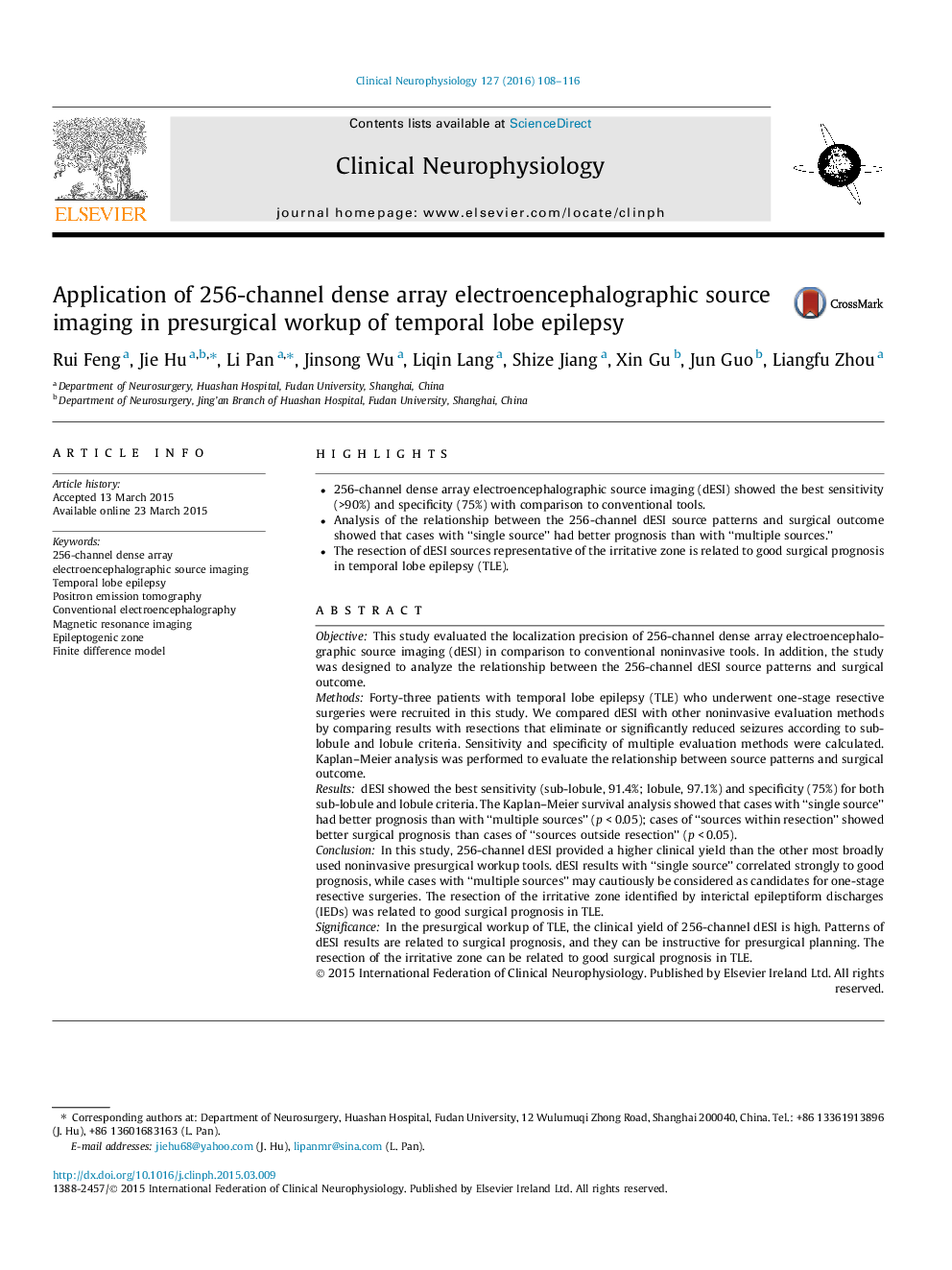| Article ID | Journal | Published Year | Pages | File Type |
|---|---|---|---|---|
| 6007840 | Clinical Neurophysiology | 2016 | 9 Pages |
â¢256-channel dense array electroencephalographic source imaging (dESI) showed the best sensitivity (>90%) and specificity (75%) with comparison to conventional tools.â¢Analysis of the relationship between the 256-channel dESI source patterns and surgical outcome showed that cases with “single source” had better prognosis than with “multiple sources.”â¢The resection of dESI sources representative of the irritative zone is related to good surgical prognosis in temporal lobe epilepsy (TLE).
ObjectiveThis study evaluated the localization precision of 256-channel dense array electroencephalographic source imaging (dESI) in comparison to conventional noninvasive tools. In addition, the study was designed to analyze the relationship between the 256-channel dESI source patterns and surgical outcome.MethodsForty-three patients with temporal lobe epilepsy (TLE) who underwent one-stage resective surgeries were recruited in this study. We compared dESI with other noninvasive evaluation methods by comparing results with resections that eliminate or significantly reduced seizures according to sub-lobule and lobule criteria. Sensitivity and specificity of multiple evaluation methods were calculated. Kaplan-Meier analysis was performed to evaluate the relationship between source patterns and surgical outcome.ResultsdESI showed the best sensitivity (sub-lobule, 91.4%; lobule, 97.1%) and specificity (75%) for both sub-lobule and lobule criteria. The Kaplan-Meier survival analysis showed that cases with “single source” had better prognosis than with “multiple sources” (p < 0.05); cases of “sources within resection” showed better surgical prognosis than cases of “sources outside resection” (p < 0.05).ConclusionIn this study, 256-channel dESI provided a higher clinical yield than the other most broadly used noninvasive presurgical workup tools. dESI results with “single source” correlated strongly to good prognosis, while cases with “multiple sources” may cautiously be considered as candidates for one-stage resective surgeries. The resection of the irritative zone identified by interictal epileptiform discharges (IEDs) was related to good surgical prognosis in TLE.SignificanceIn the presurgical workup of TLE, the clinical yield of 256-channel dESI is high. Patterns of dESI results are related to surgical prognosis, and they can be instructive for presurgical planning. The resection of the irritative zone can be related to good surgical prognosis in TLE.
